Black mold is a kind of fungus that thrives in damp and wet conditions. It can appear in different areas of a house, such as on walls, ceilings, and floors.
Cleaning black mold off walls can be a challenging task, but it is necessary to prevent it from spreading and causing further damage.
There are several methods for removing black mold from walls, including using bleach, vinegar, or commercial mold removers. Remember to wear protective gear such as gloves, goggles, and a respirator to avoid inhaling the harmful spores.

What we cover
ToggleUnderstanding black mold
Black mold is a type of fungus that can grow on surfaces in damp or humid environments. It is often found in areas that are poorly ventilated, such as bathrooms, kitchens, and basements.
Black mold can cause health problems, especially for people with allergies or weakened immune systems.
Black mold is usually black or dark green in color and has a slimy or fuzzy texture. It can grow on a variety of surfaces, including walls, ceilings, floors, and furniture.
Where to expect black mold growth
Black mold thrives in warm, moist environments, so it is important to keep areas that are prone to mold growth dry and well-ventilated.
If you suspect that you have black mold in your home, it is important to take action to remove it as soon as possible.
Removing black mold There are several ways
To remove black mold from walls, including using bleach, vinegar, or commercial mold removal products.
It is important to wear protective gear, such as gloves and a mask, when cleaning up mold to avoid inhaling spores or coming into contact with the mold.
Precautions before cleaning
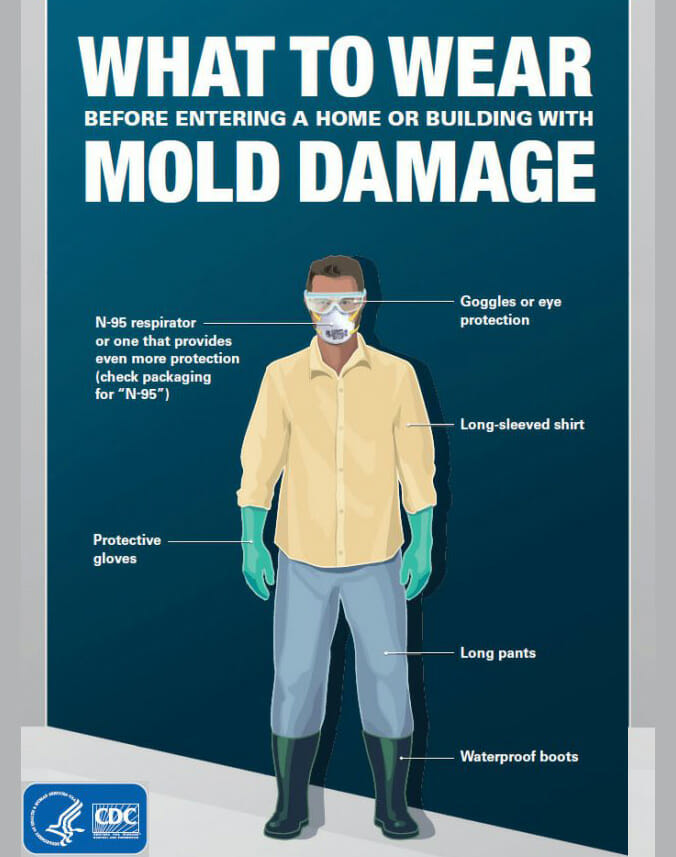
Before attempting to clean black mold off walls, it’s important to take necessary precautions to avoid any health hazards. Here are some precautions to take before starting the cleaning process:
Wear protective gear: Mold spores can cause health problems, so it’s crucial to wear protective gear while cleaning.
Wear gloves, goggles, and a mask to avoid inhaling the spores and to protect your skin from the cleaning solution.
Isolate the area: Before starting the cleaning process, isolate the area to prevent the mold spores from spreading to other parts of the house.
Seal off the room with plastic sheeting and use a HEPA air filtration system to keep the air clean.
Identify the source: Black mold thrives in damp areas, so it’s essential to identify the source of the moisture. Fix any leaks or water damage before cleaning the mold to prevent it from coming back.
Choose the right cleaning solution: There are several cleaning solutions available for removing black mold, including bleach, vinegar, and hydrogen peroxide.
Choose a solution that is suitable for the surface you are cleaning and follow the instructions carefully.
Ventilate the area: While cleaning, it’s important to keep the area well-ventilated to avoid inhaling the cleaning solution fumes. Open windows and use fans to keep the air moving.
By taking these precautions, you can safely remove black mold from your walls without putting your health at risk. Remember to follow the instructions carefully and seek professional help if the mold infestation is severe.
Materials and tools needed
When it comes to cleaning black mold off walls, it’s important to have the right materials and tools to ensure a safe and effective cleaning process. Here are the key items you’ll need:
Cleaning solutions
- Bleach: A common and effective cleaning solution for black mold. Use a mixture of 1 cup of bleach to 1 gallon of water.
- Distilled White Vinegar: Another effective and natural cleaning solution for black mold. Use undiluted vinegar or a mixture of equal parts vinegar and water.
- Hydrogen Peroxide: A non-toxic and safe cleaning solution for black mold. Use a mixture of 3% hydrogen peroxide and water.
- Baking Soda: A natural cleaning solution that can help remove black mold stains. Mix baking soda with water to form a paste.
Protective gear
- Respirator: To protect yourself from breathing in harmful mold spores, wear a respirator mask that is rated for mold removal.
- Safety glasses: To protect your eyes from mold spores and cleaning solutions, wear safety glasses.
- Gloves: To protect your skin from mold and cleaning solutions, wear gloves made of rubber or latex.
- Disposable coveralls: To protect your clothing from mold and cleaning solutions, wear disposable coveralls.
Cleaning tools
- Scrub Brush: Use a stiff-bristled scrub brush to scrub away black mold from walls.
- Sponge: Use a sponge to apply cleaning solutions to walls and to wipe away excess moisture.
- Bucket: Use a bucket to mix cleaning solutions and to hold cleaning tools.
- Fan: Use a fan to help dry walls after cleaning to prevent mold from returning.
Step-by-step mold removal process
Here is a step-by-step process to remove black mold from painted walls.
1. Identify the mold-affected area
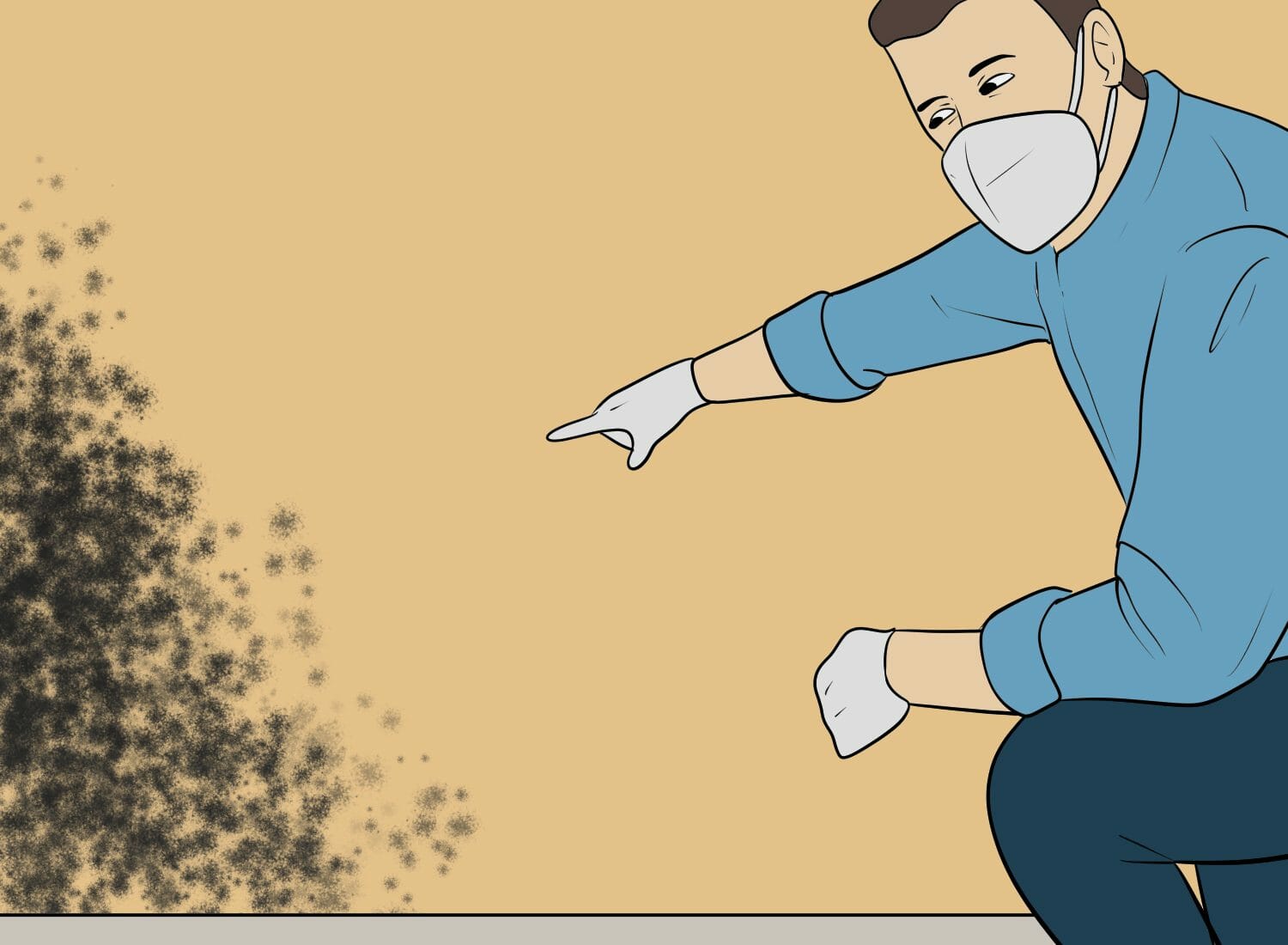
The first step in removing black mold from painted walls is to identify the affected area. Look for any signs of mold, such as black or dark green spots on the walls. If you notice a musty odor or have experienced any water damage in the area, mold is likely present.
2. Prepare the area
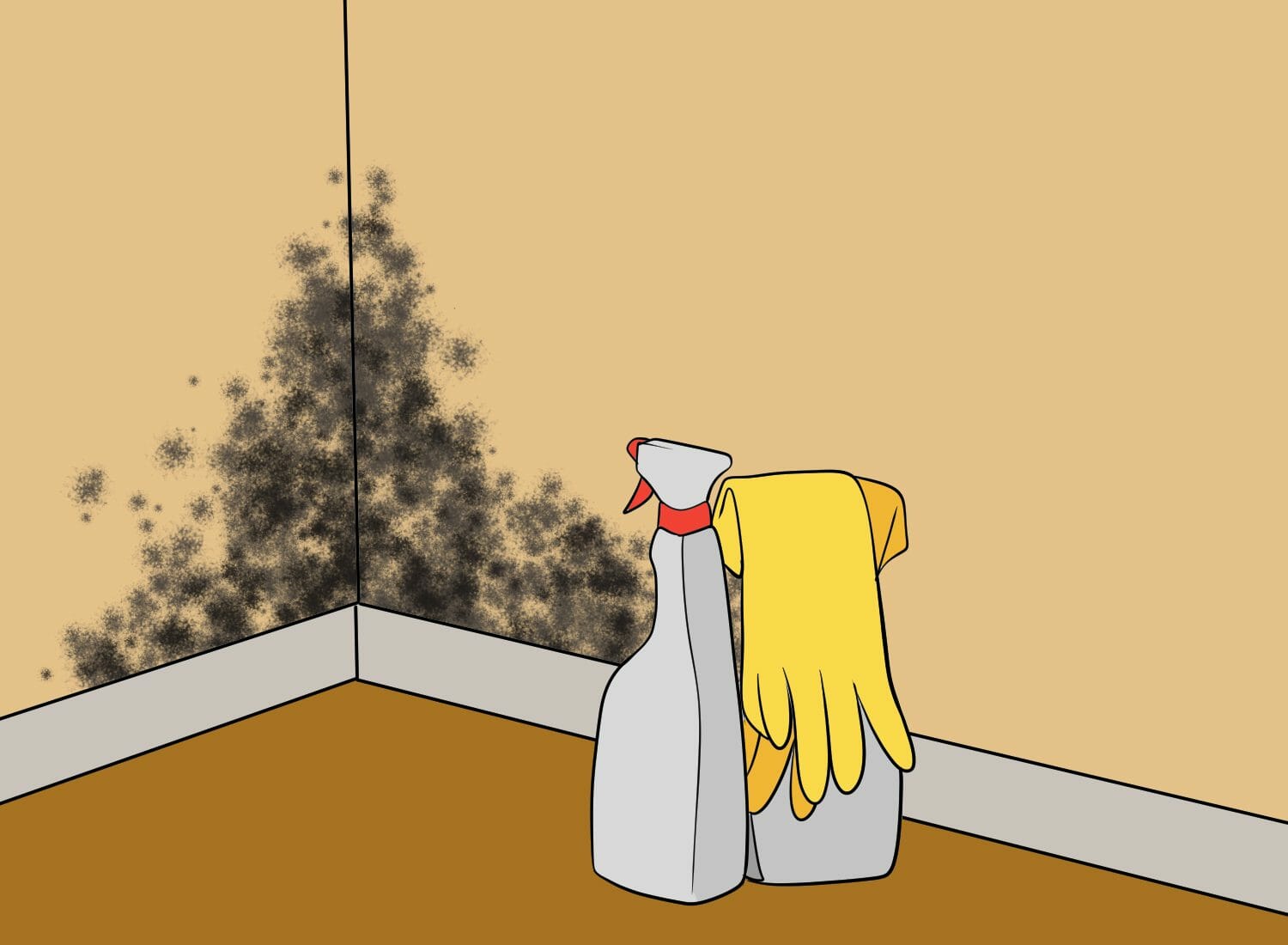
Before starting the cleaning process, it is important to prepare the area. This involves covering the floors and furniture with plastic sheeting to protect them from the cleaning solution. Wear gloves, goggles, and a respirator to protect yourself from the mold spores.
3. Apply the cleaning solution
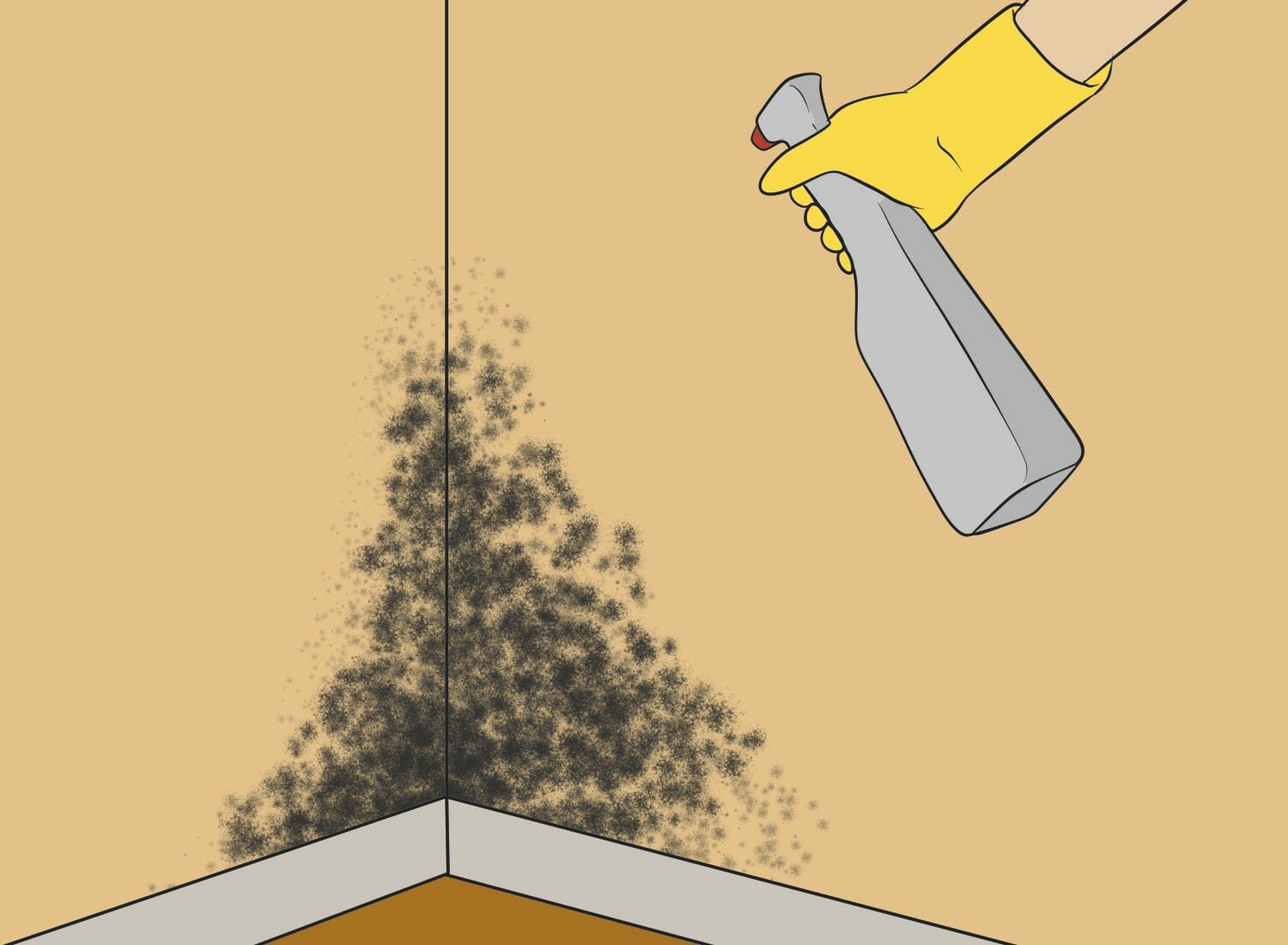
Mix a solution of one part bleach to three parts water in a spray bottle. Spray the affected area with the solution and let it sit for 15 minutes. You can also use a commercial mold cleaner instead of bleach if you prefer.
4. Scrub the mold off
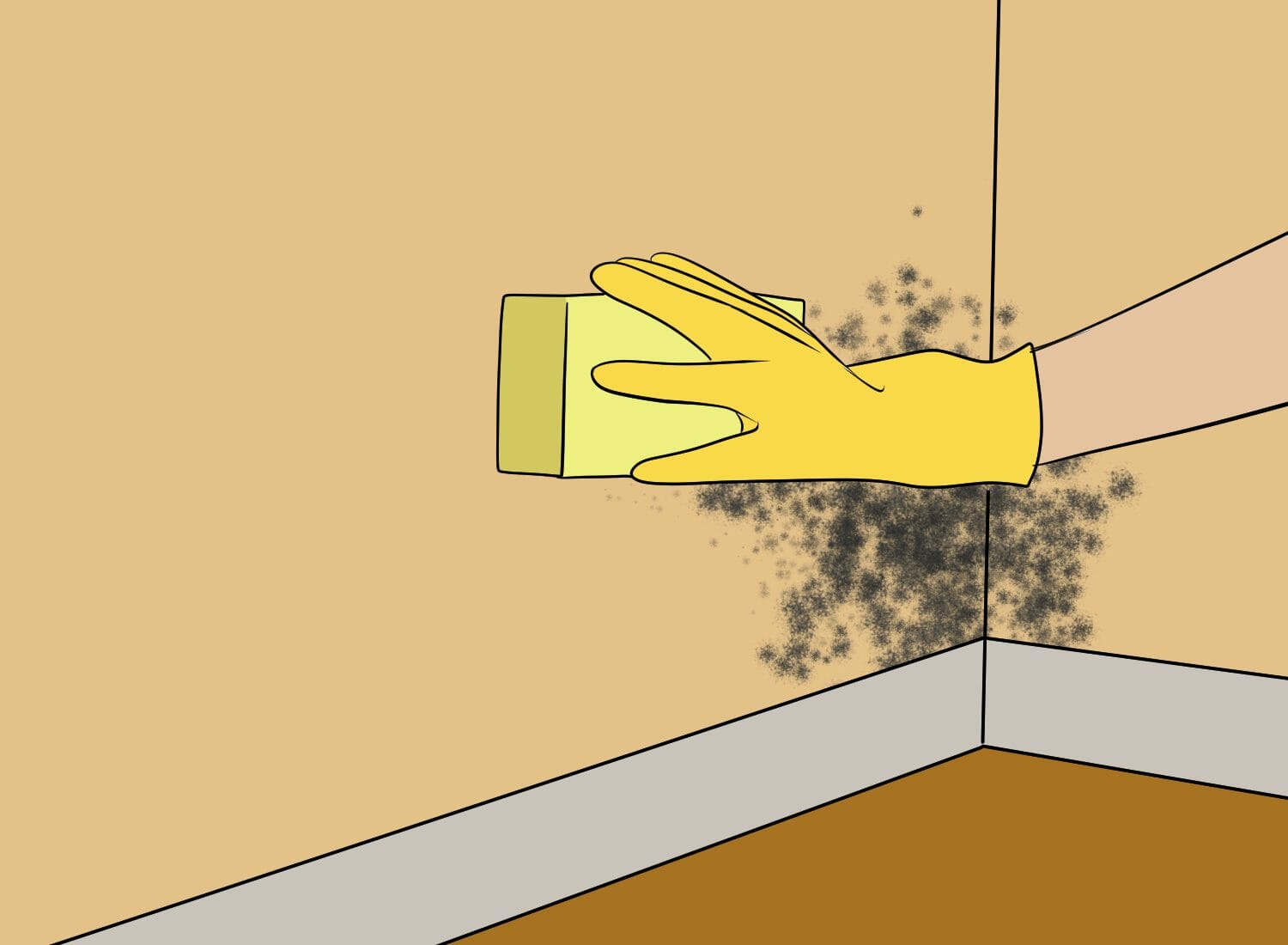
Use a stiff-bristled brush to scrub the mold off the painted wall. Be sure to scrub gently to avoid damaging the paint. If the mold is particularly stubborn, you may need to use a scraper to remove it.
5. Rinse and dry
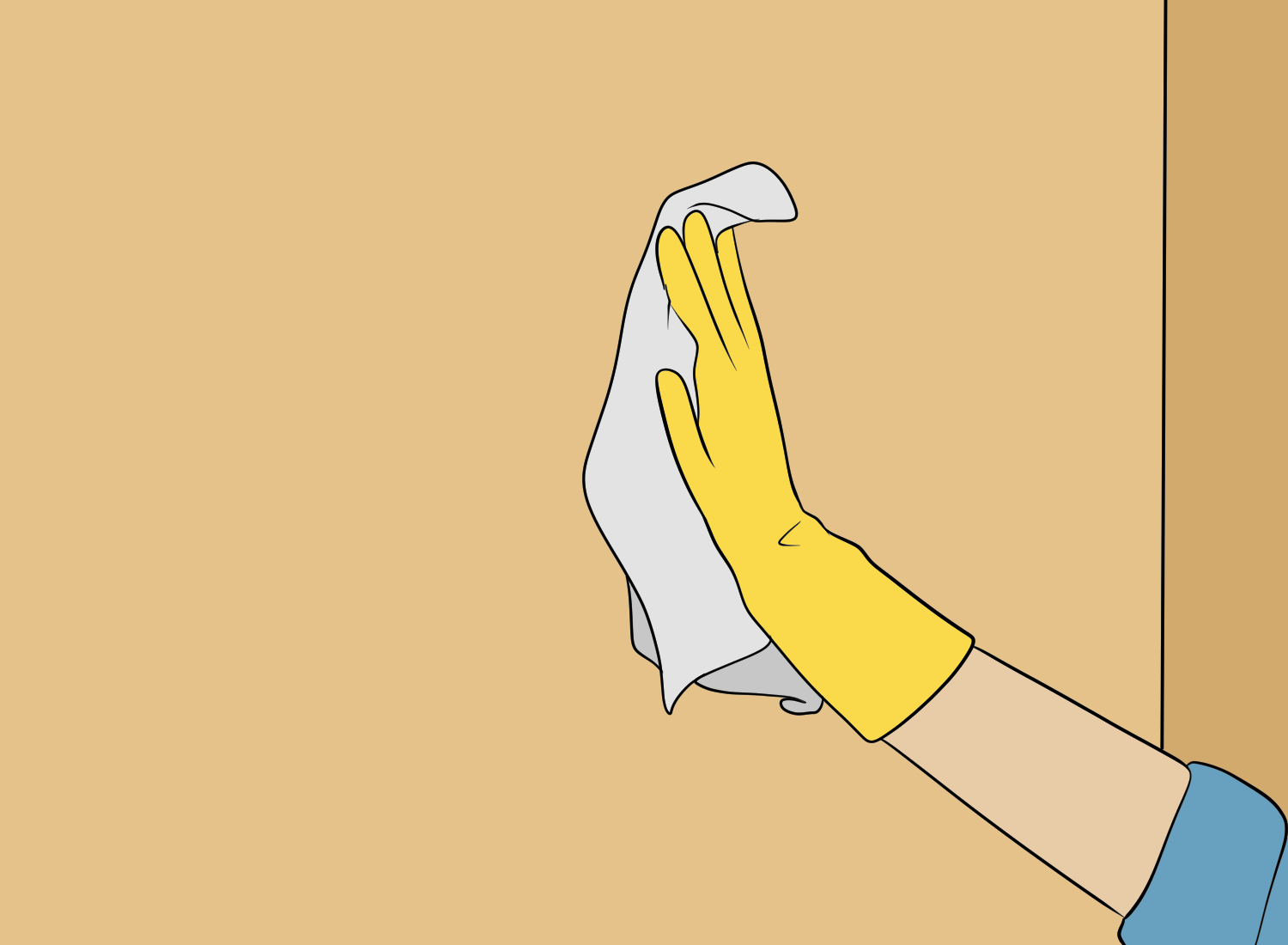
After scrubbing the mold off the painted wall, rinse the area with a clean cloth and warm water. Dry the wall thoroughly with a fan or dehumidifier to prevent the mold from returning.
6. Repaint the wall
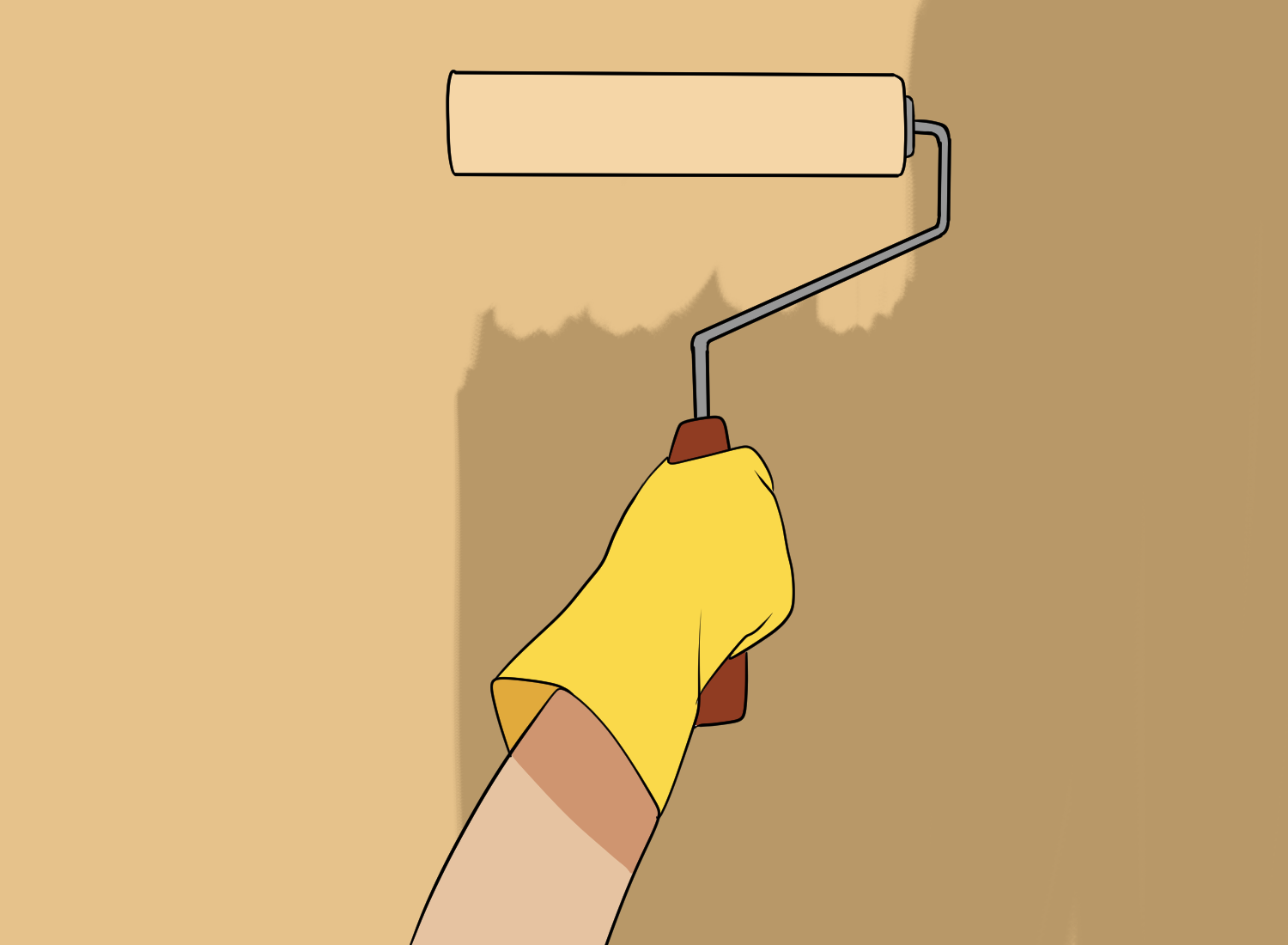
Once the wall is completely dry, you can repaint it. Use a mold-resistant paint to prevent future mold growth. Be sure to follow the manufacturer’s instructions for application and drying times.
By following these steps, you can effectively remove black mold from painted walls. Remember to take precautions to protect yourself from the mold spores and to use a mold-resistant paint to prevent future growth.
Preventing future mold growth
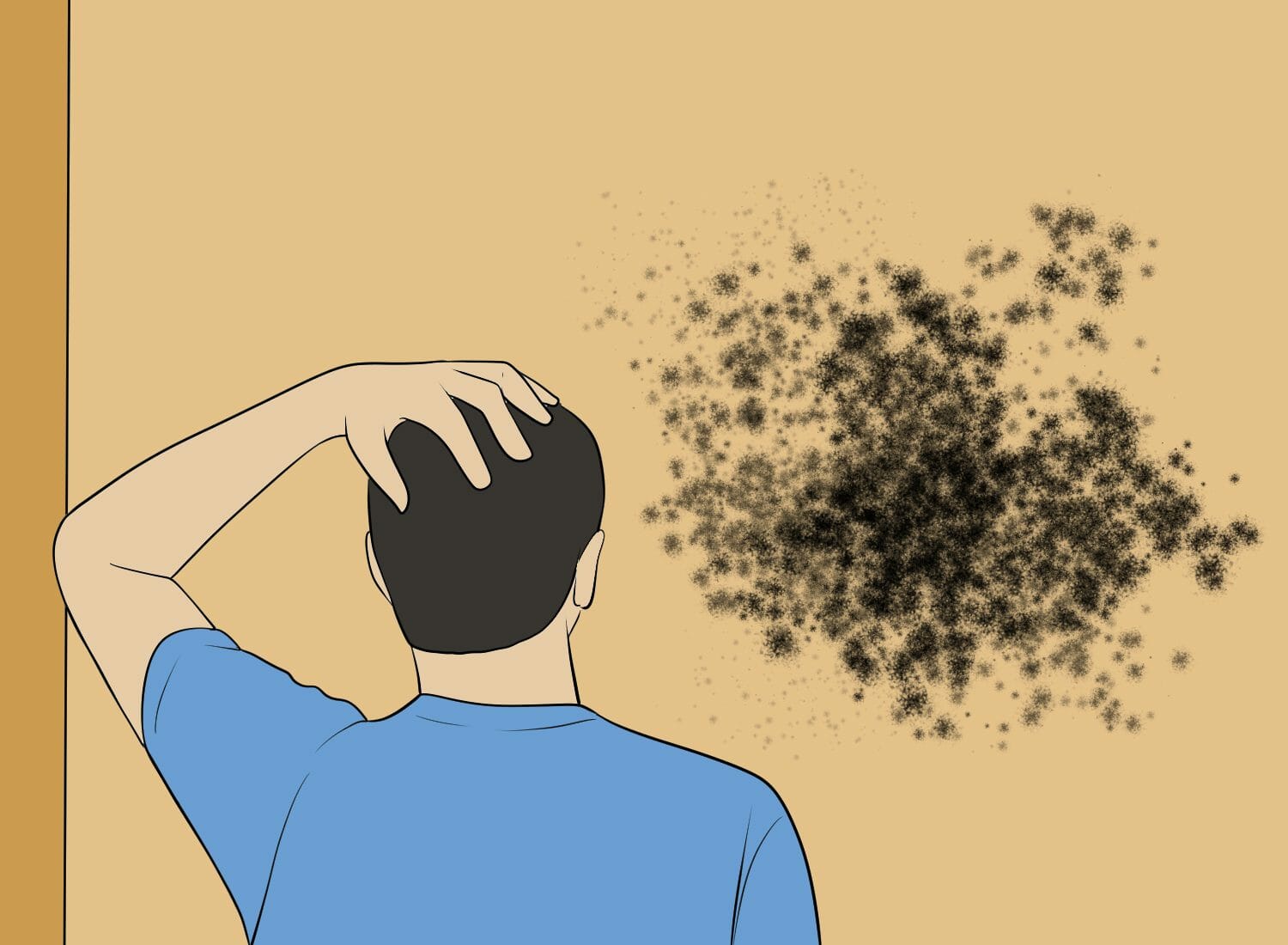
Preventing future mold growth is an important step in maintaining a healthy home environment. Here are some tips to help prevent mold from growing on your walls:
Control moisture: Mold thrives in moist environments, so it’s important to keep your home dry. Fix any leaks in your plumbing or roof immediately, and use a dehumidifier to keep the humidity levels in your home below 60%.
Improve ventilation: Proper ventilation can help prevent mold growth. Make sure your home has adequate ventilation in areas like the bathroom, kitchen, and laundry room.
Consider installing exhaust fans or opening windows to increase airflow.
Clean regularly: Regular cleaning can help prevent mold growth. Use a mold-inhibiting cleaner to clean your walls and other surfaces regularly, and be sure to dry them thoroughly after cleaning.
Use mold-resistant paint: Mold-resistant paint can help prevent mold growth on your walls. Look for paint that contains antimicrobial agents, which can help prevent mold from growing.
Monitor humidity levels: Keep an eye on the humidity levels in your home, especially during humid months or after heavy rain. Use a hygrometer to monitor humidity levels and take action if levels rise above 60%.






